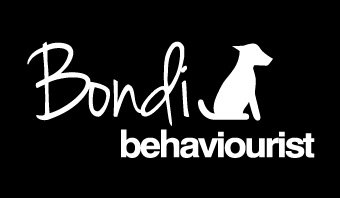Are Board-and-Trains Right for Your Dog?
Are Board-and-Train Programs Right for Your Dog?
Finding the right training approach for your dog can feel overwhelming, especially if you’re dealing with complex behaviors like aggression or reactivity but even for what might seem like common behaviours you will find a range of answers online that all seem to contradict one another. For dog owners in Sydney, board-and-train programs are often marketed as a quick and professional solution. However, before committing to this method, it’s essential to understand its strengths, limitations, and long-term impact on your dog’s behavior and your ability to manage it.
What Are Board-and-Train Programs?
Board-and-train programs involve sending your dog to a professional trainer for an intensive training period, typically lasting a few weeks. During this time, your dog lives with the trainer and undergoes structured sessions designed to address specific behavioral issues, such as aggression or reactivity, or to build foundational obedience skills.
These programs are appealing for their convenience and the promise of quick results. For busy owners, the idea of outsourcing training can seem like the perfect solution. However, as with any approach, it’s important to weigh the pros and cons.
Key Benefits of Board-and-Train Programs
Consistent Training Environment: Your dog receives focused attention in a structured setting, free from the distractions of home life.
Consistent Handling: Trainers with experience in aggressive dog training or working with reactive dogs can address challenging behaviors effectively.
Time-Saving: For owners with limited availability, board-and-train programs can potentially lay foundations.
These benefits potentially make board-and-train programs a viable option for specific cases.
Potential Drawbacks of Board-and-Train Programs
Methodology: Be very aware of the methodology that any trainer uses and teaches on your dog. Punitive methods that focus on correction of unwanted behaviour more so than proactively teaching the dog what the desirable behaviours are have big behavioural consequences. Punishment can break down trust between dogs and people, compound stress, fear, anxiety and frustration and increase aggression.
Limited Real-Life Context: Training in a controlled environment may not prepare your dog for the unpredictable situations they’ll encounter in daily life.
Owner Disconnection: Without active participation, owners may struggle to maintain the progress made during the program.
Behavioral Regression: Skills learned in the program may not transfer effectively to the home environment, leading to frustration for both the dog and the owner.
Cost: These programs are often a significant financial investment, which may not always yield sustainable results.
Alternative Options to Board-and-Trains
For owners seeking effective training approaches that foster long-term success, here are two alternative options to consider:
One-on-One Personalised Training: Individualized training sessions with a professional allow you and your dog to work together in real-world settings. This approach focuses on tailoring techniques to your dog’s unique needs while actively involving you in the process. It’s an excellent option for addressing specific behaviors, like reactivity or aggression, and empowers you with the knowledge to maintain progress at home.
Day Training Programs: Day training combines the structure of professional training with the involvement of the owner. In this model, you drop your dog off for training sessions or the trainer comes to you to collect your dog during the day and receive coaching on applying the skills at home/in their usual environment. It’s a flexible and effective way to build your dog’s skills while ensuring those skills translate into your daily routine.
Both alternatives emphasize the importance of owner participation and real-world application, which are critical for long-term success.
The Importance of Owner Involvement
The most effective training programs are those that equip both the dog and the owner with the skills needed for long-term success. All training but particularly reactive and aggressive behaviors are often deeply rooted and require ongoing management. Owners play a critical role in reinforcing training and applying it in real-world scenarios. Programs that prioritize owner education and involvement tend to deliver better results over time.
Conclusion
While board-and-train programs may offer initial progress, they often fall short in preparing dog owners and their pets for success in real-life situations. Training completed in a controlled setting may not fully translate to the unpredictable nature of daily life. For sustainable results, it’s crucial that owners actively participate in the training process, learning how to reinforce skills and address challenges as they arise. The real key to success lies in equipping both the dog and the owner with the tools to thrive together.
If you’re a dog owner in Sydney wondering how to train your reactive dog or address specific behavioral challenges, consider training approaches that prioritize collaboration between you and your dog. Ultimately, a partnership-based approach can lead to stronger, more lasting results.
Ready to take the next step in your dog training journey? Learn more about personalized training options designed to empower you and your dog for real-life success and book in a Free Discovery Session

